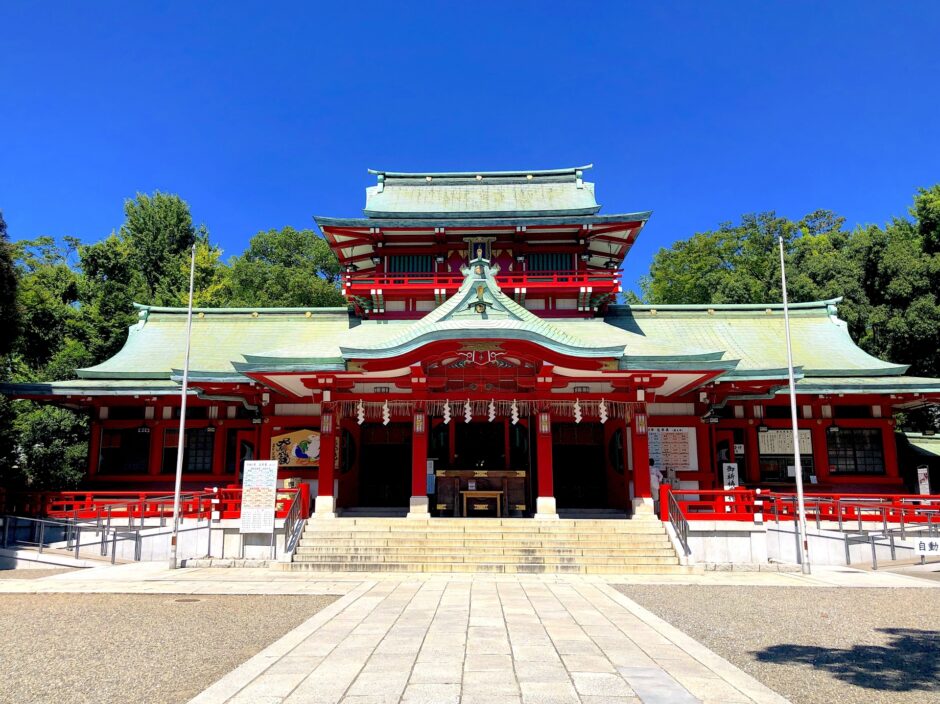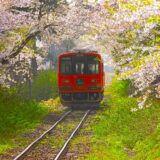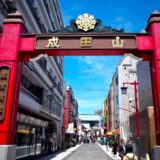目次
- 【Tomioka Hachiman Shrine summary】
- 【Tomioka Hachiman Shrine road approaching a shrine】
- 【Tomioka Hachiman Shrine Statue of Tadataka Ino】
- 【Tomioka Hachiman Shrine shrine dedicated to ritual cleansing of hands and mouth with water】
- 【Tomioka Hachiman Shrine hall of worship】
- 【Tomioka Hachiman Shrine Monument to Yokozuna Rikishi】
- 【Tomioka Hachiman Shrine precincts Nanato Shrine】
- 【Tomioka Hachiman Shrine precincts Statue of Mr. Tomioka】
- 【Tomioka Hachiman Shrine GOSHUIN】
- 【Tomioka Hachiman Shrine Nearby attractions】
- 【Tomioka Hachiman Shrine Access】
- Manager’s Comments
- Tomioka Hachiman Shrine
【Tomioka Hachiman Shrine summary】
Tomioka Hachimangu Shrine was built in 1627 by Nagamori Hoin, a descendant of Sugawara no Michizane, at the present site, which was then called Eitaijima. The entire surrounding area of sandbars was reclaimed, and approximately 60,000 tsubo of land was acquired for the shrine, making it “the largest Hachiman shrine in Edo. Since its founding, the shrine has developed under the protection of the Tokugawa shoguns, and the Fukagawa Hachiman Festival held every August is known as the “mizukake-matsuri,” where spectators are drenched with water. It is one of the three major festivals in Edo, and was visited by the Emperor and Empress in August of 2012. It is also commonly known as Fukagawa Hachiman Shrine, and is one of the ten shrines of Tokyo.
【Tomioka Hachiman Shrine road approaching a shrine】
![Tomioka Hachiman Shrine (Fukagawa Hachiman) [Tokyo] DSC 1131 1024x768 - Tomioka Hachiman Shrine (Fukagawa Hachiman) [Tokyo]](https://japan-shrine.info/wp-content/uploads/DSC_1131-1024x768.jpg)
The bright red torii gate has a great impact. There is a tea shop with a nice atmosphere on the approach to the shrine, and an old man was sleeping on a bench.
【Tomioka Hachiman Shrine Statue of Tadataka Ino】
![Tomioka Hachiman Shrine (Fukagawa Hachiman) [Tokyo] DSC 1135 1024x768 - Tomioka Hachiman Shrine (Fukagawa Hachiman) [Tokyo]](https://japan-shrine.info/wp-content/uploads/DSC_1135-1024x768.jpg)
Lord Ino Tadataka lived in Fukagawa Kuroe-cho (now Monzennaka-cho) at that time and was famous among Japanese as the person who surveyed the whole country, and he always came to Tomioka Hachiman Shrine to pray for safety, which is why the bronze statue was erected.
【Tomioka Hachiman Shrine shrine dedicated to ritual cleansing of hands and mouth with water】
![Tomioka Hachiman Shrine (Fukagawa Hachiman) [Tokyo] DSC 1103 1 1024x768 - Tomioka Hachiman Shrine (Fukagawa Hachiman) [Tokyo]](https://japan-shrine.info/wp-content/uploads/DSC_1103-1-1024x768.jpg)
A golden phoenix… a tube from the mouth… that shows the personality of the shrine…
【Tomioka Hachiman Shrine hall of worship】
![Tomioka Hachiman Shrine (Fukagawa Hachiman) [Tokyo] DSC 1129 1 1024x768 - Tomioka Hachiman Shrine (Fukagawa Hachiman) [Tokyo]](https://japan-shrine.info/wp-content/uploads/DSC_1129-1-1024x768.jpg)
The worship hall is a wonderful structure with a vivid vermilion color. Currently, the worship hall is being renovated, a new guest house is being built, and the shrine office is being relocated as part of a project to commemorate the 400th anniversary of the shrine’s establishment, which is a somewhat disappointing sight. It is a strange feeling, but the worship hall is the same as in the introductory photo … but it is strange that I thought I mistook it for another shrine. Huh?
【Tomioka Hachiman Shrine Monument to Yokozuna Rikishi】
![Tomioka Hachiman Shrine (Fukagawa Hachiman) [Tokyo] DSC 1115 1 1024x768 - Tomioka Hachiman Shrine (Fukagawa Hachiman) [Tokyo]](https://japan-shrine.info/wp-content/uploads/DSC_1115-1-1024x768.jpg)
Behind the hall of worship, there is a monument honoring successive yokozuna as the birthplace of Edo kanshinzumo (the predecessor of sumo).
【Tomioka Hachiman Shrine precincts Nanato Shrine】
![Tomioka Hachiman Shrine (Fukagawa Hachiman) [Tokyo] DSC 1119 1024x768 - Tomioka Hachiman Shrine (Fukagawa Hachiman) [Tokyo]](https://japan-shrine.info/wp-content/uploads/DSC_1119-1024x768.jpg)
It is said that the deity was enshrined before the Hachiman Shrine was established.
![Tomioka Hachiman Shrine (Fukagawa Hachiman) [Tokyo] DSC 1125 1024x768 - Tomioka Hachiman Shrine (Fukagawa Hachiman) [Tokyo]](https://japan-shrine.info/wp-content/uploads/DSC_1125-1024x768.jpg)
Perhaps it was a matter of placement, but it was separated from Tomioka Hachiman Shrine by a building, and the atmosphere was somewhat lonely. However, this one is more relaxed and has the usual shrine atmosphere.
【Tomioka Hachiman Shrine precincts Statue of Mr. Tomioka】
![Tomioka Hachiman Shrine (Fukagawa Hachiman) [Tokyo] DSC 1126 1 1024x768 - Tomioka Hachiman Shrine (Fukagawa Hachiman) [Tokyo]](https://japan-shrine.info/wp-content/uploads/DSC_1126-1-1024x768.jpg)
The statue of the first chief priest… There was another shrine with a statue of the chief priest at the Cho-jinja Shrine. Mr. Tomioka seems to be the person who received the oracle, so is it appropriate? I guess…. As a shrine, I wonder if it is the right use of money.
![Tomioka Hachiman Shrine (Fukagawa Hachiman) [Tokyo] DSC 0094 160x160 - Tomioka Hachiman Shrine (Fukagawa Hachiman) [Tokyo]](https://japan-shrine.info/wp-content/uploads/DSC_0094-160x160.jpg) Tsuki Shrine [Saitama]
Tsuki Shrine [Saitama]
【Tomioka Hachiman Shrine GOSHUIN】
![Tomioka Hachiman Shrine (Fukagawa Hachiman) [Tokyo] 2024 10 19 13 08 Office Lens 743x1024 - Tomioka Hachiman Shrine (Fukagawa Hachiman) [Tokyo]](https://japan-shrine.info/wp-content/uploads/2024_10_19-13_08-Office-Lens-743x1024.jpg)
【Tomioka Hachiman Shrine Nearby attractions】
Fukagawa Fudo Hall (Narita-san Tokyo Betsuin)
【Tomioka Hachiman Shrine Access】
Manager’s Comments
It is a historic shrine in the downtown area, and the shrine pavilions are beautifully designed. There is a lot to see and it is clear that the shrine has been rooted in the community since the Edo period. The shrine is well cleaned, but I personally felt the atmosphere was a bit dull due to the construction work. I personally felt the atmosphere was a bit dull due to the construction. I had high expectations for this shrine because of its history and tradition, but…something is not beautiful…I would like to visit the shrine again when I have a chance after the construction is completed.
 Tour of Japanese shrines and temples
Tour of Japanese shrines and temples 

![Tomioka Hachiman Shrine (Fukagawa Hachiman) [Tokyo] 26603463 m 520x300 - Tomioka Hachiman Shrine (Fukagawa Hachiman) [Tokyo]](https://japan-shrine.info/wp-content/uploads/26603463_m-520x300.jpg)
![Tomioka Hachiman Shrine (Fukagawa Hachiman) [Tokyo] 557d6a98b59c79dbd4a49ad16d2cbe3f - Tomioka Hachiman Shrine (Fukagawa Hachiman) [Tokyo]](https://japan-shrine.info/wp-content/uploads/sng/557d6a98b59c79dbd4a49ad16d2cbe3f.jpg)
![Tomioka Hachiman Shrine (Fukagawa Hachiman) [Tokyo] 26603463 m 150x150 - Tomioka Hachiman Shrine (Fukagawa Hachiman) [Tokyo]](https://japan-shrine.info/wp-content/uploads/26603463_m-150x150.jpg)
![Tomioka Hachiman Shrine (Fukagawa Hachiman) [Tokyo] DSC 0809 150x150 - Tomioka Hachiman Shrine (Fukagawa Hachiman) [Tokyo]](https://japan-shrine.info/wp-content/uploads/DSC_0809-150x150.jpg)
![Tomioka Hachiman Shrine (Fukagawa Hachiman) [Tokyo] 23740271 m 150x150 - Tomioka Hachiman Shrine (Fukagawa Hachiman) [Tokyo]](https://japan-shrine.info/wp-content/uploads/23740271_m-150x150.jpg)
![Tomioka Hachiman Shrine (Fukagawa Hachiman) [Tokyo] DSC 03512 150x150 - Tomioka Hachiman Shrine (Fukagawa Hachiman) [Tokyo]](https://japan-shrine.info/wp-content/uploads/DSC_03512-150x150.jpg)

